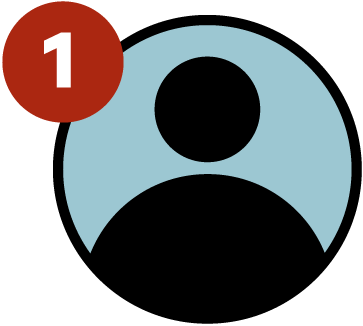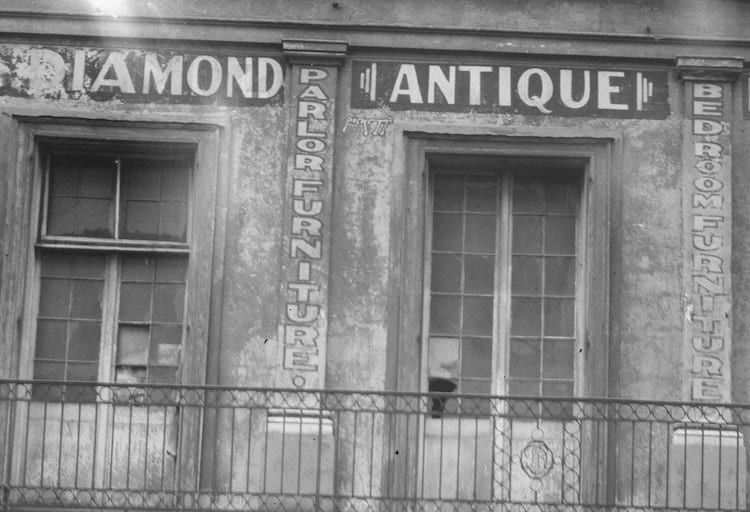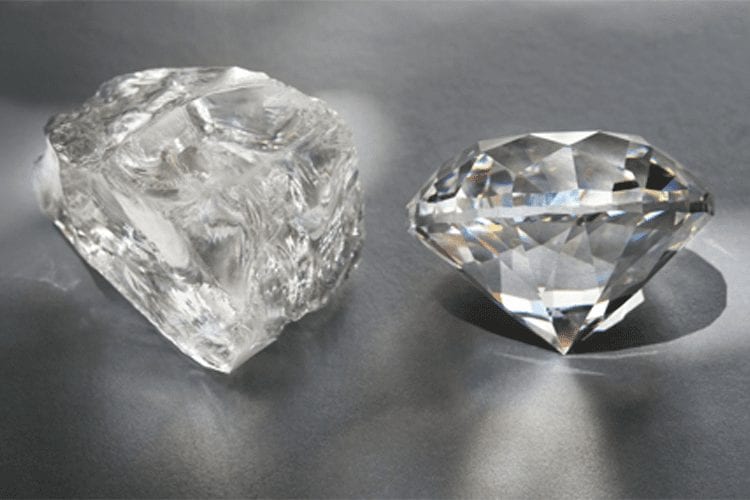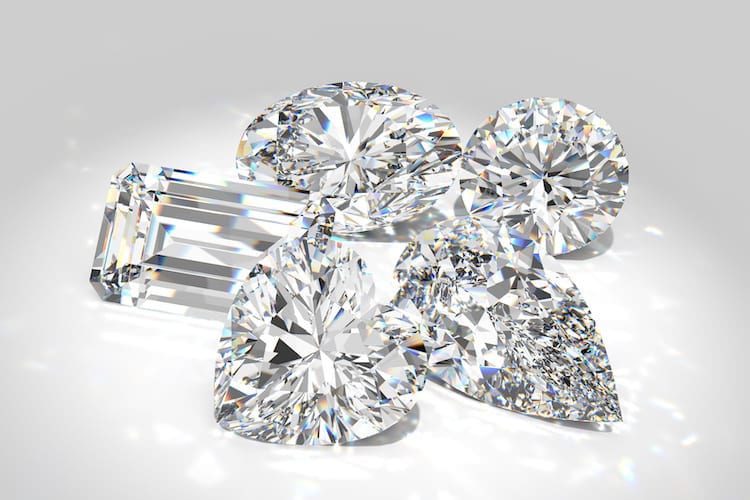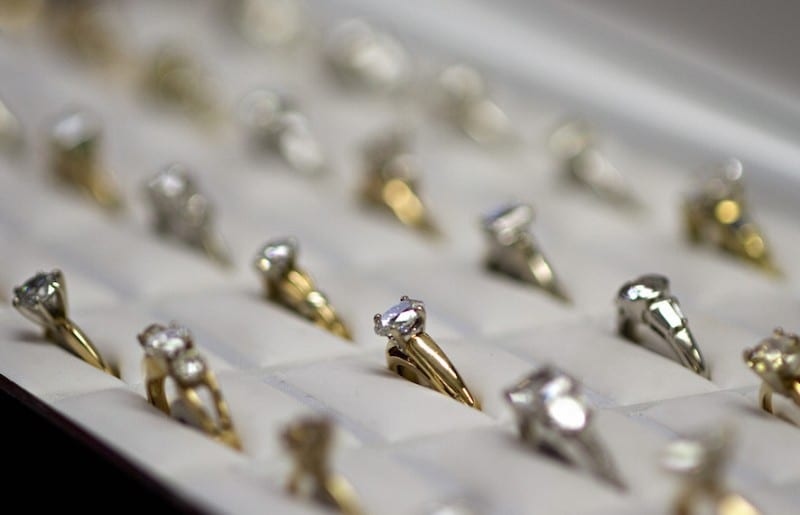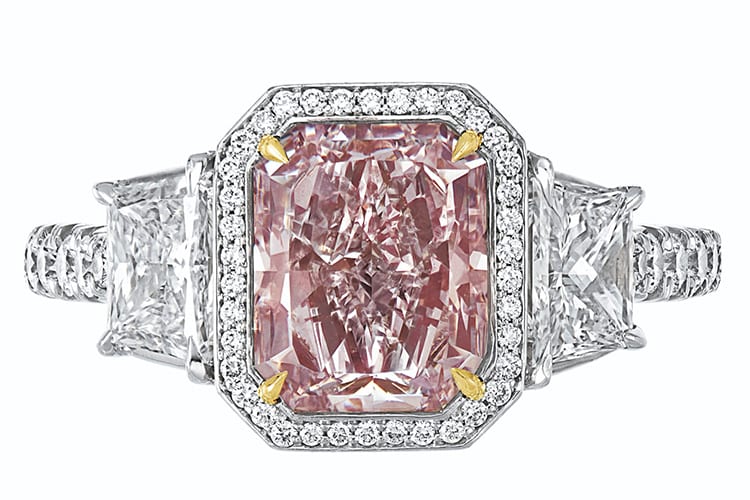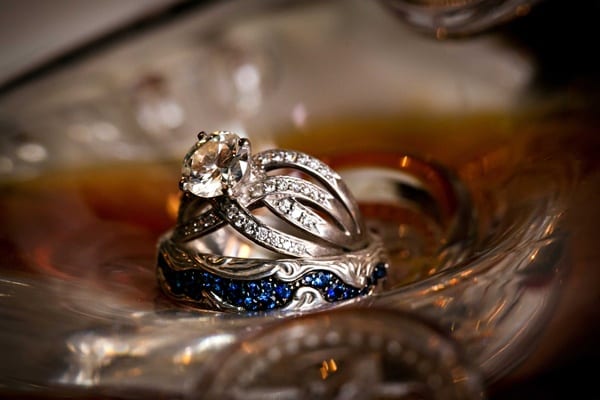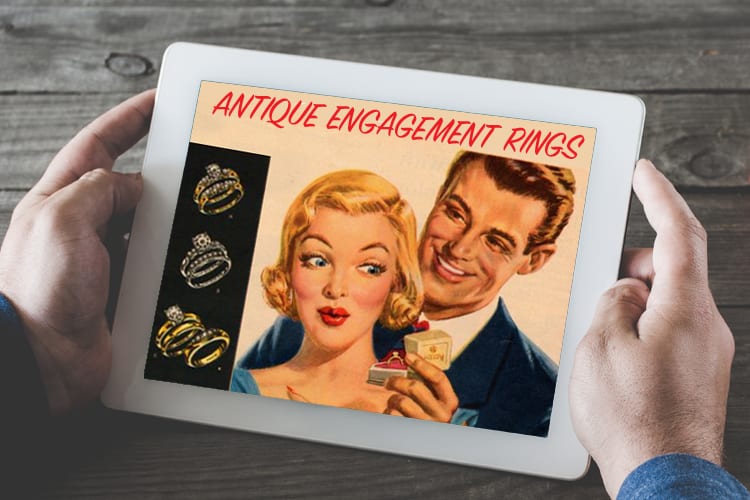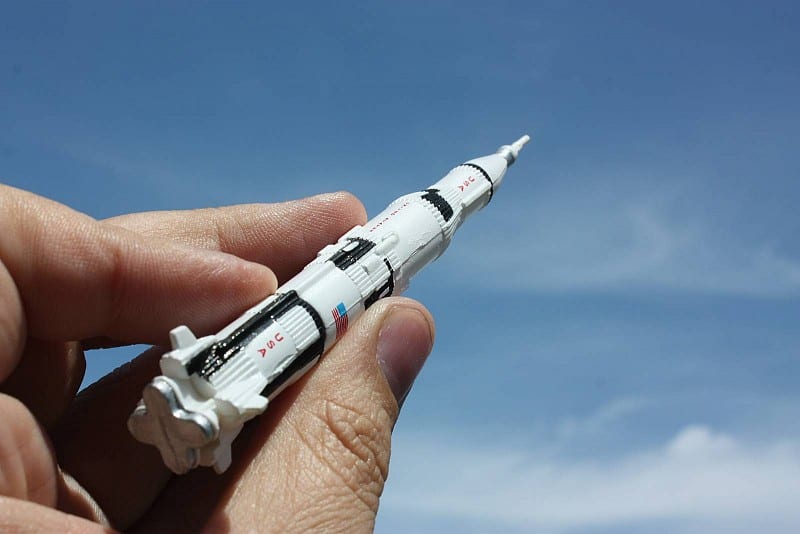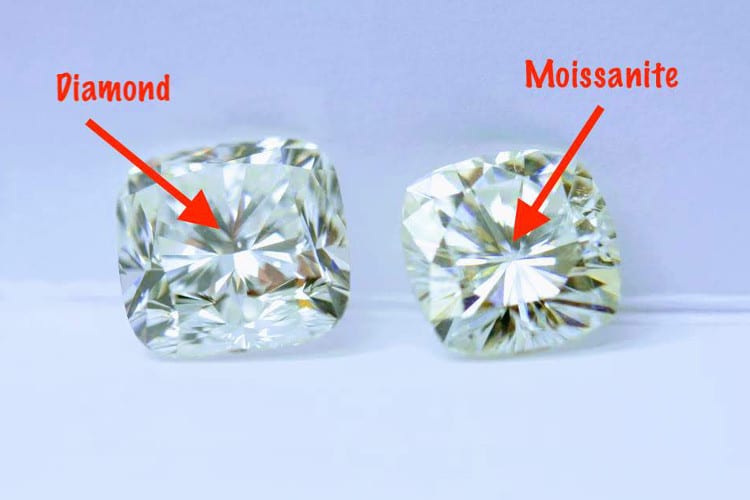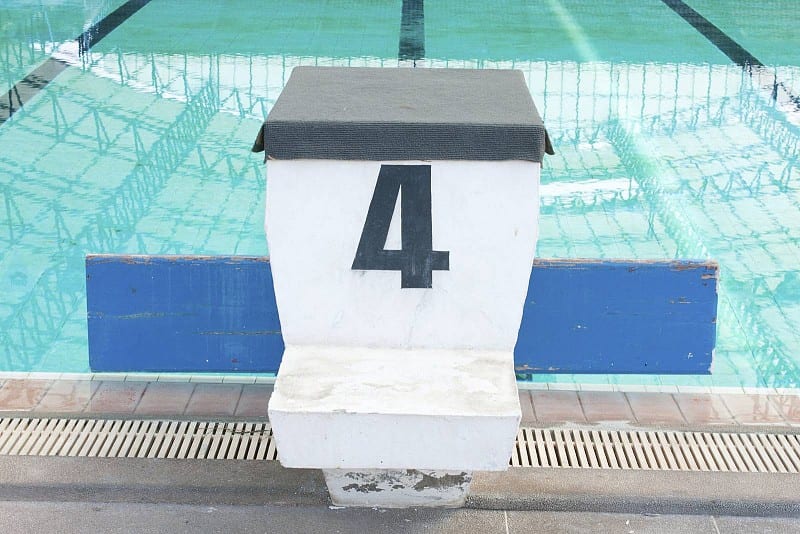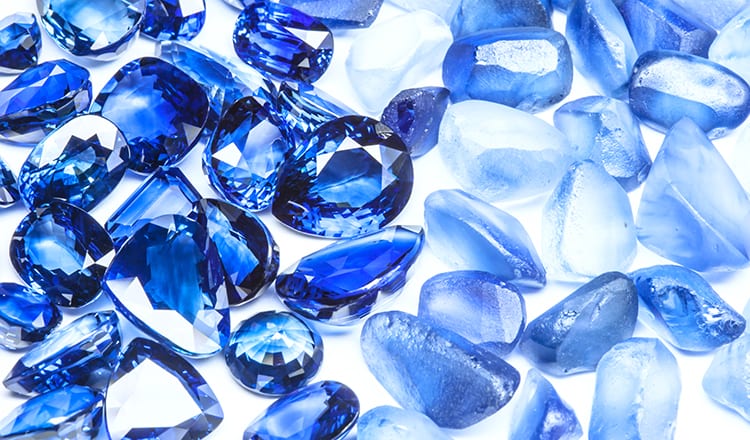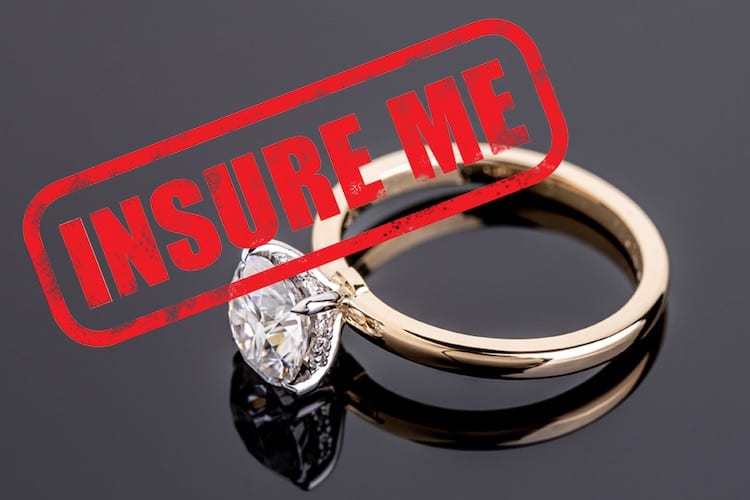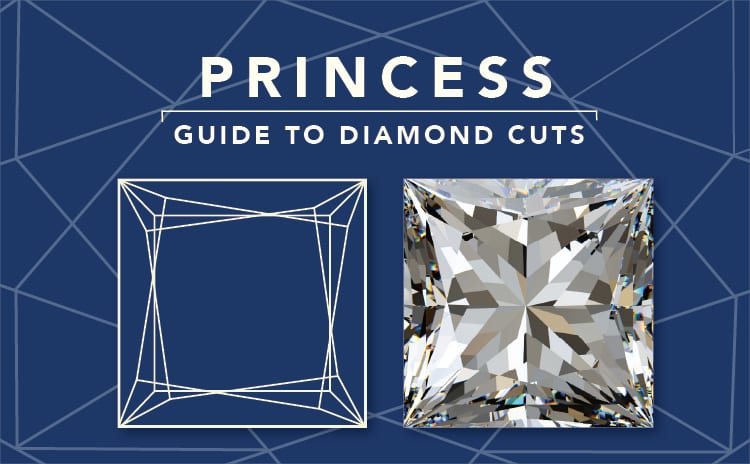
Pros/Cons: The cut combines mega-sparkle with modern lines and conceals imperfections well. That said, the square shape means the corners are prone to chipping.
Tip 1: Choose a color grade that’s slightly better than the one you would choose in a round brilliant stone.
Tip 2: Some princess cut diamonds are true squares, while others veer slightly rectangular. Try on different variations to figure out your favorite.
Of all the diamond shapes in the world, only one has a name guaranteed to evoke images of fairytale love stories: the princess cut. Also known as a “square modified brilliant” diamond — which, admittedly, has a less glamorous ring to it — the princess cut has a square silhouette and resembles an inverted pyramid.
The History of the Princess Cut Diamond
The shape is a relatively new option. In 1979, the trio of Ygal Perlman, Betzalel Ambar, and Israel Itzkowitz created the princess cut in its current form, though earlier variations on the theme were patented by enterprising diamond cutters in preceding decades dating back to the 1960s.
Its relatively short history hasn’t stopped it from being a breakout success. Princess cut diamonds are the second most popular center stone for engagement rings, following only round brilliant stones. It’s estimated that about 25% to 30% of engagement rings feature princess cut diamonds. The next in line, cushion cut stones, rank a distant third with about 8% of the market.

A key part of the allure of the princess cut is its capacity to bring together desirable qualities of very different diamond shapes. In essence, princess cut diamonds are faceted to approach the sparkle of traditional round brilliant cut diamonds while sharing the modern lines of square shapes, like the Asscher cut. For those who want a big time sparkle in a stone that has a linear silhouette, a princess cut stone is a great option.
So she wants a princess-cut diamond? Go to Whiteflash or James Allen to see what kinds of ring designs work best with that shape (and others). Their selection spans from vintage to modern — and across all budgets.
Technical Details of the Princess Cut Diamond
There’s no single defined cut standard that identifies a princess cut diamond. Though they are generally square, they are sometimes slightly rectangular — the former is generally considered to be more desirable — and their number of facets varies (facets are flat surfaces on the geometric shape of the diamond). Most have approximately 58 facets while others have more than 100.
Much like traditional round diamonds, the brilliance of princess cut stones make them good at concealing inclusions (tiny flaws), and they’re often cut from cleaner rough material than diamonds in other shapes, which means there will be fewer inclusions in a typical princess cut stone than many other varieties, a good thing to know when trying to decide what to buy.
Princess Cut Diamond Clarity
Stones with a clarity of SI1 to VS2 (middle of the pack, see illustration below) often deliver the best combination of value and pleasing appearance. It’s certainly possible to opt for higher clarity grades, though the improved quality won’t necessarily be detectable with the naked eye. Regardless of the clarity grade you choose, it’s crucial to consult with a professional to establish that the diamond you choose is eye clean. That’s because a princess cut stone has a fairly large table — the flat, window-like facet at the very top of the diamond — and even small inclusions can be easy to detect depending on their placement.
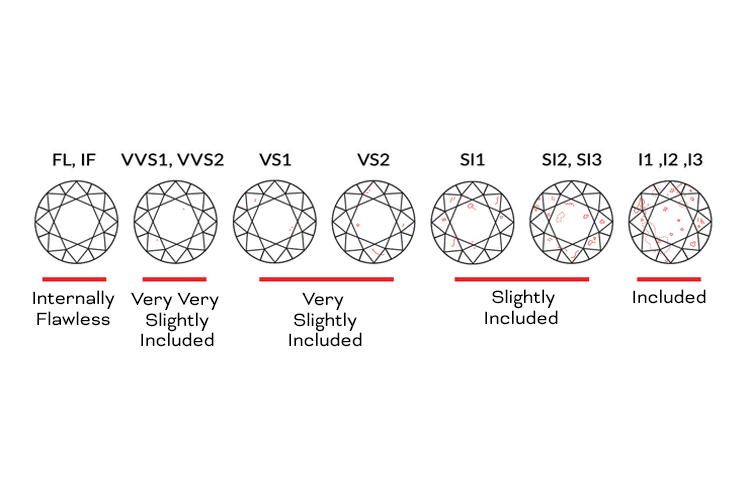
Princess Cut Diamond Colors
Because princess cut diamonds slightly intensify traces of color, it’s advisable to choose a grade that’s a notch above what you would look for in a comparable round brilliant stone. Stones with a color grade of G or H (see illustration below) generally appear virtually colorless without the price premium that comes with stones of higher grades.
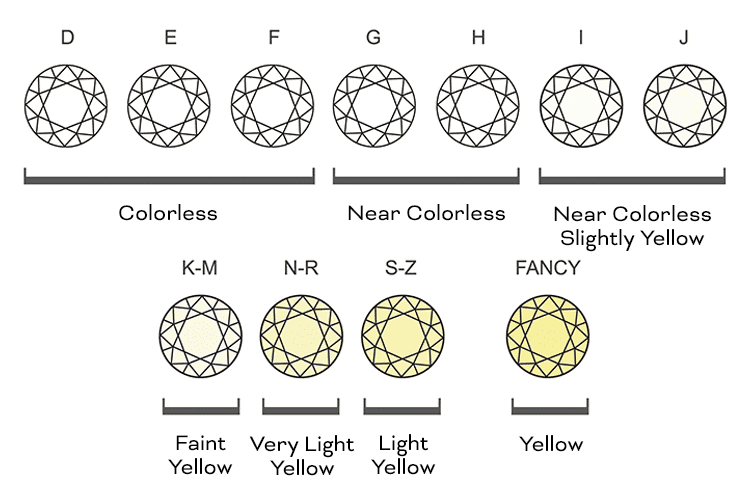
The most desirable princess cut diamonds give the impression of elegant symmetry. When face up, the facets along the top and bottom halves of the diamond should be mirror images of each other, matching in shape and size; the same should be the case for the faceting along the left and right sides of the diamond. And don’t forget to flip a diamond over to make sure the bottom of the stone, the girdle, has a smooth, gentle slope and is evenly faceted on both sides. Finally, to find a princess cut diamond that appears perfectly square to the naked eye, choose a stone with a length-to-width ratio that doesn’t exceed 1:05:1.
How Much Does a Princess Cut Diamond Cost?
There’s a practical reason that princess cut diamonds are a big hit. They are substantially less expensive per carat than round brilliant stones — at least 25% less in many cases. Since they closely echo the form of a raw diamond crystal, diamond cutters waste very little material when cutting stones into a princess cut, usually retaining upwards of 80% of the diamond. Much of the weight in princess cut stones isn’t in the crown but in the pavilion of the stone or in other words, the bottom half of the diamond that rests within the ring’s setting. As a result, the face-up appearance of a princess cut stone may be slightly smaller than other stones of comparable weight but that’s more than offset by their favorable pricing.
Don’t forget that the price of a ring will also depend on the ring metal (gold, platinum, etc.), the setting/style, and the designer.
Don’t be a sucker: Buy rings from trusted online sources James Allen, Whiteflash, and Blue Nile. You’re guaranteed to find better and more in-depth information thanks to their videos and listing details.
Choosing the Best Setting for Your Princess Cut Diamond
The sharp corners that give a princess cut diamond its distinctive look are, alas, most vulnerable to chipping so it’s essential to set a princess cut stone in a mounting that protects those potentially delicate parts of its anatomy. Bezel or four-prong settings that fully surround the diamond’s corners will shield them from dents and dings that might result from daily wear.
With their crisp, architectural lines and full-on sparkle, there’s no doubt princess cut diamonds are excellent candidates for standalone solitaires, but they also benefit from the presence of complementary stones. Colored gems or additional diamonds in shapes that line up neatly against the straight sides of princess cut diamonds, like baguettes and triangles, are some of the most popular choices. For an out-of-the box choice, consider the two-stone ring combining a princess cut diamond with a pear-shaped stone made by designer Alison Lou for model-actress Emily Ratajkowski.
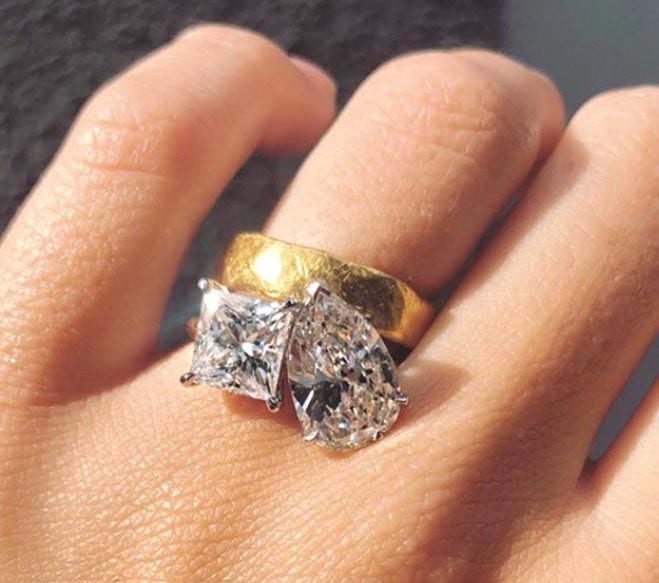
And while most princess cut stones are set in a traditional orientation so that the diamond sits squarely atop the finger, there are engagement ring designs that feature a princess cut diamond that’s been rotated at a 45-degree angle into a kite-set alignment. It’s a contemporary approach to the stone that gives it a fresh, playful spin.
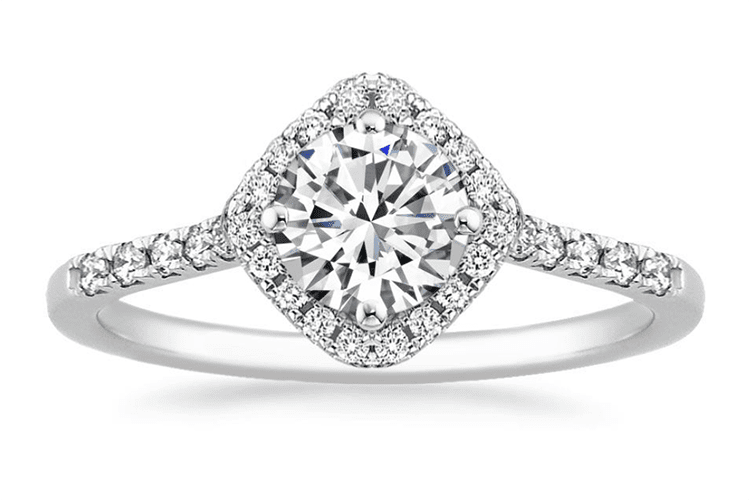
Bottom Line
You really have to look at lots of stones in person in order to find the perfect fit, at least until you know what qualities you appreciate most. After all, even Cinderella had to try on her glass slipper in real life to get her happily ever after.

